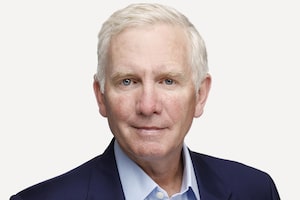Bruce Anderson is the chairman of polling firm Abacus Data, a regular member of CBC The National's "At Issue" panel and a founding partner of i2 Ideas and Issues Advertising. He has done polls for Liberal and Conservative politicians in the past, but no longer does any partisan work. Other members of his family have worked for Conservative and Liberal politicians, and a daughter currently works for Liberal Leader Justin Trudeau. He writes a weekly digital column for The Globe and Mail.
Given a choice, nobody would prefer fighting a two-front war to focusing on one opponent. But does anyone in Canadian politics still have a choice?
For the longest time, only the NDP needed to fight on two fronts. Tom Mulcair needed to knock down the Conservatives and undermine the Liberals.
Mulcair's path to victory required him to both make the case for change, and convince people that he was able to win the election and deliver that change. Being 7 or 8 points behind the Liberal Party made the second part of that claim seem more hopeful than factual. The Alberta victory by Rachel Notley has reminded everyone how things can change, and that for average voters (not other partisans), the NDP is far from a toxic brand.
Meanwhile, both the Liberals and the Conservatives could afford to focus most of their attention on each other.
The Conservatives had been training their weapons mostly on Liberals and raising questions about Justin Trudeau's fitness for office. Their goal was to see the Liberals and the NDP split the "change" vote equally. They were happy enough if they hobbled the Grits, even if it meant seeing some gains for the NDP. Lately, this approach had been showing some promise for Mr. Harper.
But, too much of a good thing isn't always a good thing. Conservatives may now need to beware of what they were wishing for.
In the wake of Notley's win, pollsters (including me) are looking to get a handle on what it means for the federal NDP. Some may conclude it's a blip, while others may think that this is the start of a big wave. My own instincts are to take more time and maintain an open mind about what might or might not be under way. While it's far from certain that the federal NDP are surging – it would also be a mistake to assume that it can't possibly be happening, too.
So far, the national appetite for change has been broad, but not entirely enthusiastic. Fifty per cent want change, another 19 per cent would prefer it but don't feel all that strongly. Should that 19 per cent develop a head of steam, federal Tories could face real trouble.
In Alberta, change didn't really look like it had a chance, until it suddenly became an unstoppable force. That sort of pop-up phenomenon is becoming a new normal in this era of low-engagement politics. Polls well in advance of a campaign are best read with this in mind.
The Conservatives can thus ill afford to focus only on Justin Trudeau and the Liberals. They need to fashion an argument that will put a ceiling on NDP growth. This won't be easy for them, because they have little feel for voters who are tempted by the NDP. Over-the-top attacks could end up sounding like arrogance. Politics is difficult, sometimes.
For the Liberals, the clearest path to a win looked to be about taking the fight to the Conservatives, and along the way rallying those voters who wanted change around the only brand that looked as though it could deliver it.
The Notley win, if it produces a sustained ripple effect for the federal NDP, will require the Liberals to adjust. They will need to firm up the market for change, and argue that Liberal change will be better for you than what the NDP is offering. The idea that change could only plausibly happen with a Liberal vote is not as obvious a proposition as it seemed only a few weeks ago.
In the run-up to this long-anticipated federal election, the mood in Ottawa is highly charged, and many seem tempted to offer forceful, if ill-advised, declarations based on every new piece of data.
But what we know now is not much different than what we've known for some time: This election will feature three well-funded, highly competitive parties, each led by talented politicians. While some may crave a prediction, sensible observers know that the outcome is becoming less, not more, predictable as the writ period draws near. This campaign hasn't even really begun.
A federal election has not officially been called yet, but party leaders and their political machines have wasted no time zeroing in on the key ridings where they want to pick up seats, or need to defend them. In Montreal, in one of the country's safest Liberal ridings, the party is leaving nothing to chance. And in Truro, N.S., the Conservatives are taking a challenge from a one-time Tory personally. It all highlights the powerful political maxim that it is best be humble about your support – even a handful of seats could mean the difference between winning and losing. The campaign of inches has begun.
 Bruce Anderson
Bruce Anderson